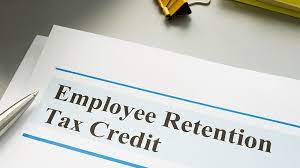
Are you a church, religious organization, or nonprofit seeking information about the Employee Retention Credit (ERTC)? Look no further. This article will provide you with comprehensive details on how this tax credit works and whether your organization is eligible for it.
The ERTC is designed to incentivize organizations to retain their employees during challenging times, such as the COVID-19 pandemic. By offering financial relief, it aims to keep individuals employed and businesses operational. Nonprofits, churches, and religious organizations can also benefit from this program.
To qualify for the ERTC, certain criteria must be met. Even if your organization does not file a tax return or has not experienced a significant decline in gross receipts, you may still be eligible for this credit.
In order to apply for the ERTC, there are specific requirements that need to be fulfilled. Understanding these application guidelines is crucial to ensure a smooth process.
Stay tuned as we delve into the intricacies of the Employee Retention Credit for Churches, Religious Organizations and Nonprofits.
What Is the Employee Retention Tax Credit for Nonprofits and Churches?
The Employee Retention Tax Credit is a lifeline for nonprofits and churches, providing much-needed financial relief in these uncertain times. This tax credit was introduced as a response to the adverse effects of the pandemic on businesses, including qualified nonprofit organizations and churches.
It allows these entities to claim a refundable tax credit based on wages paid to employees who were affected by the pandemic. To be eligible for this credit, nonprofits and churches must have experienced either a full or partial suspension of their operations due to governmental orders or a significant decline in gross receipts.
The credit is calculated based on qualified wages paid between March 13, 2020, and December 31, 2021. It’s important to note that there are certain limitations when claiming this credit. For example, if an organization receives Paycheck Protection Program (PPP) loans, they may not claim the retention credit for the same wages used as the basis for loan forgiveness. Additionally, there are specific rules regarding employee counts and average annual gross receipts that need to be considered.
By taking advantage of the Employee Retention Tax Credit, nonprofits and churches can alleviate some of their financial burdens during these challenging times while continuing to support their missions effectively.
How Does the Employee Retention Credit for Churches and Nonprofits Work?
Churches and nonprofits can receive cash refunds through payroll tax, helping them keep their employees and serve their communities. Here’s a breakdown of how the Employee Retention Credit (ERC) for churches and nonprofits works:
- Eligible employers: To qualify for the ERC, churches and religious organizations must have experienced a significant decline in gross receipts or been subject to a full or partial suspension of operations due to government orders.
- Qualified wages: The credit allows eligible employers to claim up to 50% of qualified wages paid to employees. These wages include both cash compensation and certain health benefits.
- Maximum credit amount: The maximum credit per employee is $5,000 for the year 2020. This means that if an eligible employer pays an employee $10,000 in qualified wages, they can claim a credit of $5,000 for that employee.
- Claiming the credit: Employers can claim the ERC by reporting it on their quarterly employment tax returns (Form 941). If the credit exceeds the employer’s total liability for Social Security taxes in any quarter, they can request an advance payment from the IRS.
The Employee Retention Credit provides much-needed financial support to churches, religious organizations, and nonprofits during these challenging times. By offering cash refunds through payroll tax, it helps these entities retain their valuable employees while continuing their important work in serving communities across the country.
What are the eligibilty requirements for ERTC for Non-Profits?
To qualify for the Employee Retention Credit, you must meet certain eligibility requirements as a non-profit entity. These requirements are designed to ensure that the credit is granted to organizations that have been significantly affected by the COVID-19 pandemic.
Firstly, your organization must have experienced a substantial decline in gross receipts. This means that your gross receipts in any calendar quarter of 2020 should be less than 50% of what they were in the same quarter of 2019. Alternatively, if comparing quarters isn’t feasible, you can use an annual basis comparison instead.
Secondly, your non-profit must have had its operations fully or partially suspended due to government orders related to COVID-19. This means that your organization wasn’t able to continue providing goods or services normally because of these orders.
Lastly, it’s required that you have paid qualified wages and health plan expenses to your employees during the period of suspension or significant decline in gross receipts.
By meeting these eligibility requirements, your non-profit entity may be eligible for the Employee Retention Credit and receive financial assistance during these challenging times caused by the ongoing pandemic.
Is our church eligible even if we do not file a tax return?
By understanding these key points, you can determine if your church or nonprofit qualifies for ERTC and take advantage of this valuable financial assistance opportunity.
If you don’t file a tax return, you might still be eligible for the Employee Retention Credit (ERTC) for your church. This credit can provide much-needed financial assistance during these challenging times caused by the ongoing pandemic.
The ERTC is available to eligible employers, including churches and religious organizations, who have experienced a significant decline in gross receipts or have been subject to a full or partial suspension of operations due to government orders.
To claim the ERTC, you will need to complete Form 7200 and submit it to the IRS. This form allows eligible employers, including those that don’t typically file a tax return, to request an advance payment of the credit. Keep in mind that if your church has received Paycheck Protection Program (PPP) funds, you may not be able to claim certain wages for both the PPP loan forgiveness and the ERTC.
It’s important to note that eligibility requirements and guidelines for claiming the ERTC may change over time as new legislation is enacted or guidance is issued by the IRS. To ensure compliance with all applicable rules and regulations, it’s recommended that you consult with a qualified tax professional or visit the official IRS website for up-to-date information on your eligibility status and how to claim this valuable credit.
Our church or nonprofit did not see a significant decline in gross receipts
Despite not experiencing a significant decline in gross receipts, your church or nonprofit may still be eligible for the valuable financial assistance provided by the Employee Retention Credit (ERC).
The ERC is a tax credit designed to help businesses and organizations retain their employees during challenging times, such as the current COVID-19 pandemic.
To qualify for the ERC, your church or nonprofit needs to meet certain criteria. While a decline in gross receipts of 50% or more is typically required, there are alternative tests available for organizations that don’t file tax returns.
One such test compares current quarterly gross receipts to those of the same quarter in 2019. If your organization’s Q2 2020 gross receipts declined by at least 50% compared to Q2 2019, you would be eligible for the ERC.
It’s important to note that even if your organization didn’t experience a significant decline in gross receipts, there may still be other factors that make you eligible for this credit. For example, if your operations were partially or fully suspended due to government orders during any calendar quarter of 2020, you could still qualify.
By taking advantage of the Employee Retention Credit, your church or nonprofit can access much-needed financial relief and continue supporting its mission and employees during these challenging times.
Can we still qualify for ERTC?
Even if your church or nonprofit hasn’t seen a significant decline in revenue, you can still qualify for the valuable financial assistance provided by the Employee Retention Credit (ERC). This credit is designed to help organizations retain their employees during challenging times, such as the COVID-19 pandemic. Here are four key points to consider:
- Eligibility: While a decline in gross receipts is one way to qualify for ERC, there’s another criterion that applies specifically to churches and religious organizations. Even if your revenue remains stable, you may still be eligible for ERC if you experienced a full or partial suspension of operations due to government orders.
- Calculation: The ERC amount is determined based on qualified wages paid to employees during specific periods of time. It can provide up to 50% of eligible wages, with a maximum credit of $5,000 per employee per year.
- Documentation: To claim the credit, it’s important to maintain accurate records and documentation of eligible wages and any suspensions of operations. This will help support your eligibility and ensure compliance with IRS requirements.
- Seeking professional guidance: Navigating the complex rules and regulations surrounding ERC can be challenging. Consider consulting with a tax professional who specializes in nonprofit organizations to ensure you fully understand your eligibility and maximize your benefits.
What are the application requirement for Employee Retention Credit for Churches and Non-Profit Organizations?
Now that you’ve determined your eligibility for the Employee Retention Credit (ERC), let’s dive into the application requirements specifically tailored for churches and nonprofit organizations.
It’s crucial to understand these requirements in order to successfully claim the ERC and secure much-needed funds for your organization.
When applying for the ERC, there are a few key pieces of information that you’ll need to provide. First and foremost, you must demonstrate that your church or nonprofit had employees on its payroll during the designated periods of time specified by the IRS.
Additionally, you’ll need to calculate the qualified wages paid to each employee during those periods.
It’s important to note that the ERC has undergone adjustments and changes in response to shifting economic conditions. Therefore, it’s highly recommended that you work with an ERC expert, such as a member of our team, who can help you navigate through these complexities and ensure accurate filing.
Our team of experts has extensive experience helping organizations like yours secure significant refunds through the ERC. They understand the specific eligibility requirements for churches and nonprofits and can manage the entire application process on your behalf.
Don’t hesitate to reach out to a member of our team today or start claiming the Employee Retention Credit for your church or nonprofit organization. By streamlining accounting processes and taking advantage of this program, you can save your bottom line and continue making a positive impact in your community.
Frequently Asked Questions
Can a church or nonprofit still qualify for the Employee Retention Credit if they do not file a tax return?
Yes, a church or nonprofit can still qualify for the employee retention credit even if they don’t file a tax return. The IRS has provided an alternative method for these organizations to claim the credit by filing Form 7200. This form allows them to request an advance payment of the credit, which can be helpful in maintaining their cash flow during these challenging times. It’s important for eligible organizations to carefully follow the instructions and guidelines provided by the IRS when claiming this credit.
What happens if a church or nonprofit did not experience a significant decline in gross receipts? Are they still eligible for the Employee Retention Credit?
If a church or nonprofit didn’t experience a significant decline in gross receipts, they may not be eligible for the employee retention credit. The credit is specifically designed to provide financial assistance to organizations that have suffered economic hardship due to the COVID-19 pandemic. However, it’s important to consult with a tax professional or refer to official IRS guidance for specific eligibility requirements and any potential exceptions that may apply.
Are there any specific eligibility requirements for churches and religious organizations to qualify for the Employee Retention Tax Credit?
To qualify for the employee retention tax credit, churches and religious organizations must meet certain eligibility requirements.
These include demonstrating a significant decline in gross receipts or experiencing a full or partial suspension of operations due to government orders related to COVID-19.
Additionally, the organization shouldn’t have received a Paycheck Protection Program loan.
Meeting these criteria allows churches and religious organizations to claim the employee retention credit as an incentive for retaining employees during these challenging times.
How does the Employee Retention Credit for churches and nonprofits actually work?
The Employee Retention Credit for churches, religious organizations, and nonprofits is a tax incentive that aims to help these entities retain their employees during challenging times. It works by providing a refundable credit against certain employment taxes.
To be eligible, organizations must meet specific criteria such as experiencing a significant decline in gross receipts or being subject to government-imposed restrictions. The credit amount is calculated based on qualified wages paid to employees and has certain limitations.
What are the application requirements for churches and non-profit organizations to apply for the Employee Retention Credit?
To apply for the employee retention credit, churches and non-profit organizations need to meet certain requirements.
First, they must demonstrate a significant decline in gross receipts or be subject to a full or partial suspension of operations due to COVID-19.
Second, they should have performed relevant services during the period for which the credit is claimed.
Finally, they must report qualified wages and health plan expenses on their employment tax returns.
Meeting these criteria allows them to qualify for the credit.
Conclusion
In conclusion, if you’re a church, religious organization, or nonprofit, the Employee Retention Tax Credit (ERTC) can provide significant benefits for your employee retention efforts. By meeting the eligibility requirements and filing a tax return, you can potentially qualify for this credit even if your gross receipts haven’t declined significantly.
Make sure to carefully follow the application requirements to ensure a smooth process. Take advantage of this opportunity to support your organization and retain valuable employees.






The Employee Retention Credit seems like a crucial support system for nonprofits and churches during these challenging times. It’s impressive how it aims to keep organizations afloat and employees retained despite economic hardships. I wonder, though, how many eligible organizations are actually aware of this opportunity? The criteria seem straightforward, but I’m curious if the application process is as simple as it sounds. It’s great that even organizations without a significant decline in gross receipts can qualify—this could be a game-changer for many. However, I’d like to know more about the limitations, especially for those who’ve received PPP loans. Do you think this credit could have been more impactful if extended beyond 2021? What’s your take on its long-term effects on nonprofits and churches?
The ERC was never intended to be a long-term solution for businesses or non-profits. It’s intention was to provide relief for businesses and non-profits that retained employees during the COVID-19 pandemic. Specifically the 2020-2021 tax years. The time for filing for ERC has now elapsed as of April 15, 2025. The only way to still be able to collect on ERC is if a business or non-profit filed an extention for their 2021 taxes. In which case, the business has until October 2025 or whatever date they actually filed their 2021 taxes to claim ERC.